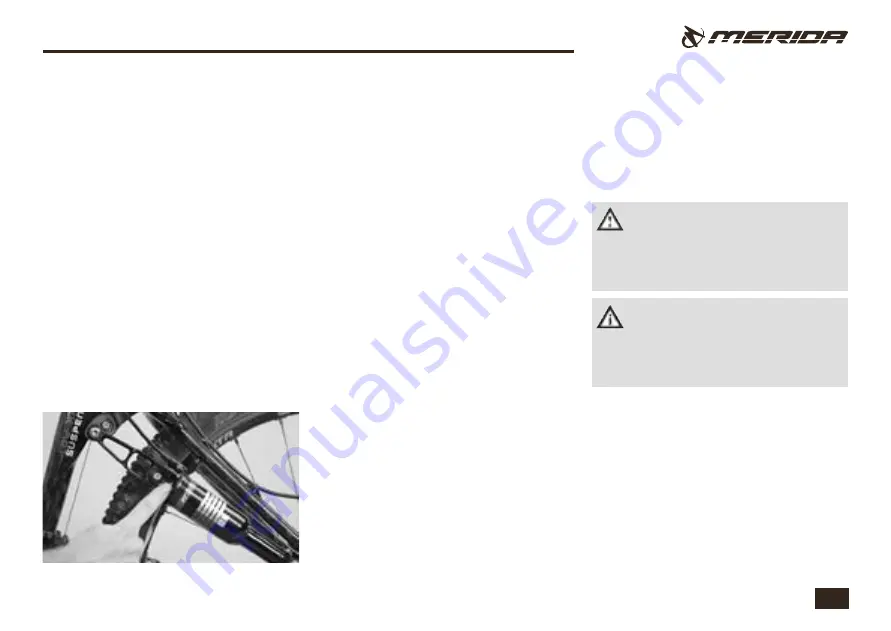
8
5.. Adjusting the damping
Rebound damping
can be adjusted by simply
turning the red handwheel at the upper end
of the rear shock. The handwheel enables you
to modify the valve sections in the oil bath
and hence the oil flow rate and volume.
Start with the rebound damping value entirely
open and increase it in small increments.
Rebound damping is normally considered
to be good when the rear frame bobs about
one to one-and-a-half times after descending
from a high kerb.
Turn the handwheel in very small increments
(i.e. click by click) from the open to the closed
position until you reach the degree of damp-
ing that suits you best.
5. Adjusting the rear shock absorber
Test the response you get after every change.
If you turn the adjusting wheel too far, the oil
will flow very slowly and increase the shock
absorption to a maximum. This results in a
sluggish rebound movement and the rear
shock will yield all the way when subjected to
a quick series of shocks.
Turning the adjusting wheel in the other direc-
tion reduces shock absorption, making the
rear shock rebound faster.
When you increase rebound damping, this
slows down the rebound movement, effective-
ly preventing the rear frame from bobbing
up and down. Excessive rebound damping,
however, prevents the spring element from
rebounding fast enough for the rear frame to
respond adequately to holes.
With some models
compression damp-
ing
can be altered, as well. Experience has
shown that it is best to start with adjusting the
rebound damping before varying the com-
pression damping. Start with the compression
damping value entirely open and increase it
in small increments. You will notice chang-
es by the speed with which the rear shock
yields.
5.. Making corrections on a test ride
Take your bike for a test ride on different
kinds of surface. If the rear shock bottoms
out several times, you will need to change the
spring rate, i.e. increase the pressure in the
air chamber.
Do not ride your bike, if the rear
shock tends to bottom out. This could
cause damage to the rear shock as well as
to the frame. Increase the air pressure as
described before.
Take down the results obtained in
the course of this hard detail work.
This will save you time, i.e. you will not have
to repeat the procedure again, in case you
ever lose pressure.
You are then in a position to directly adjust
the rear shock by means of the rear shock
pump according to your wishes.






























